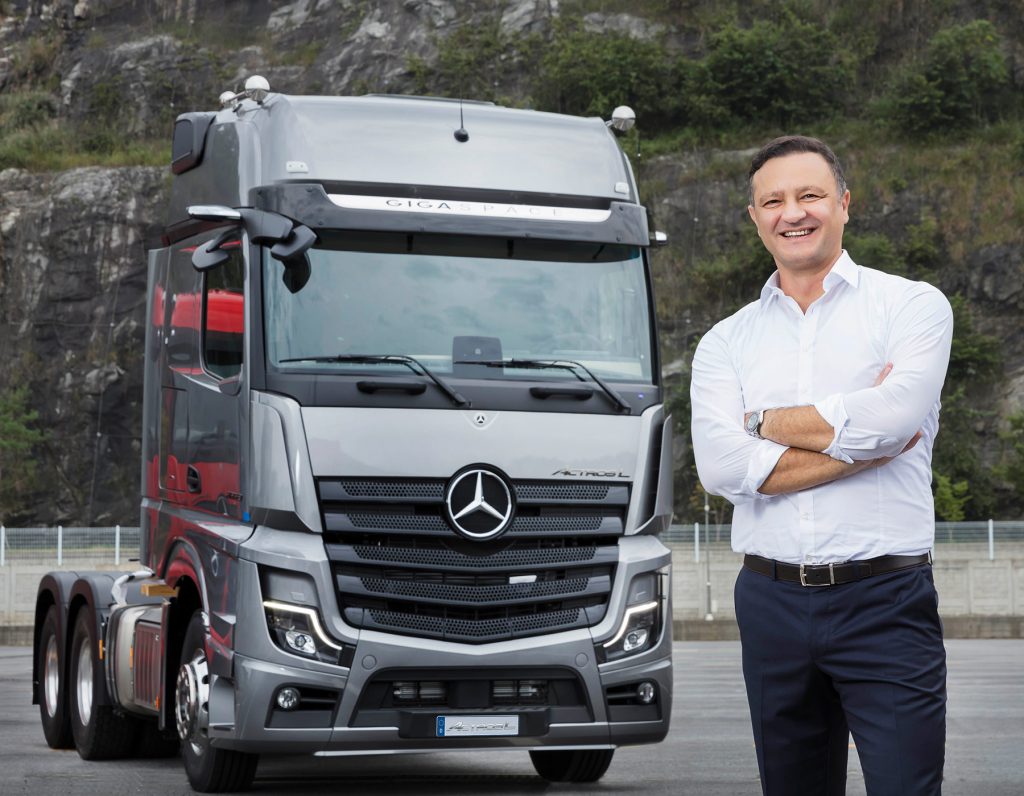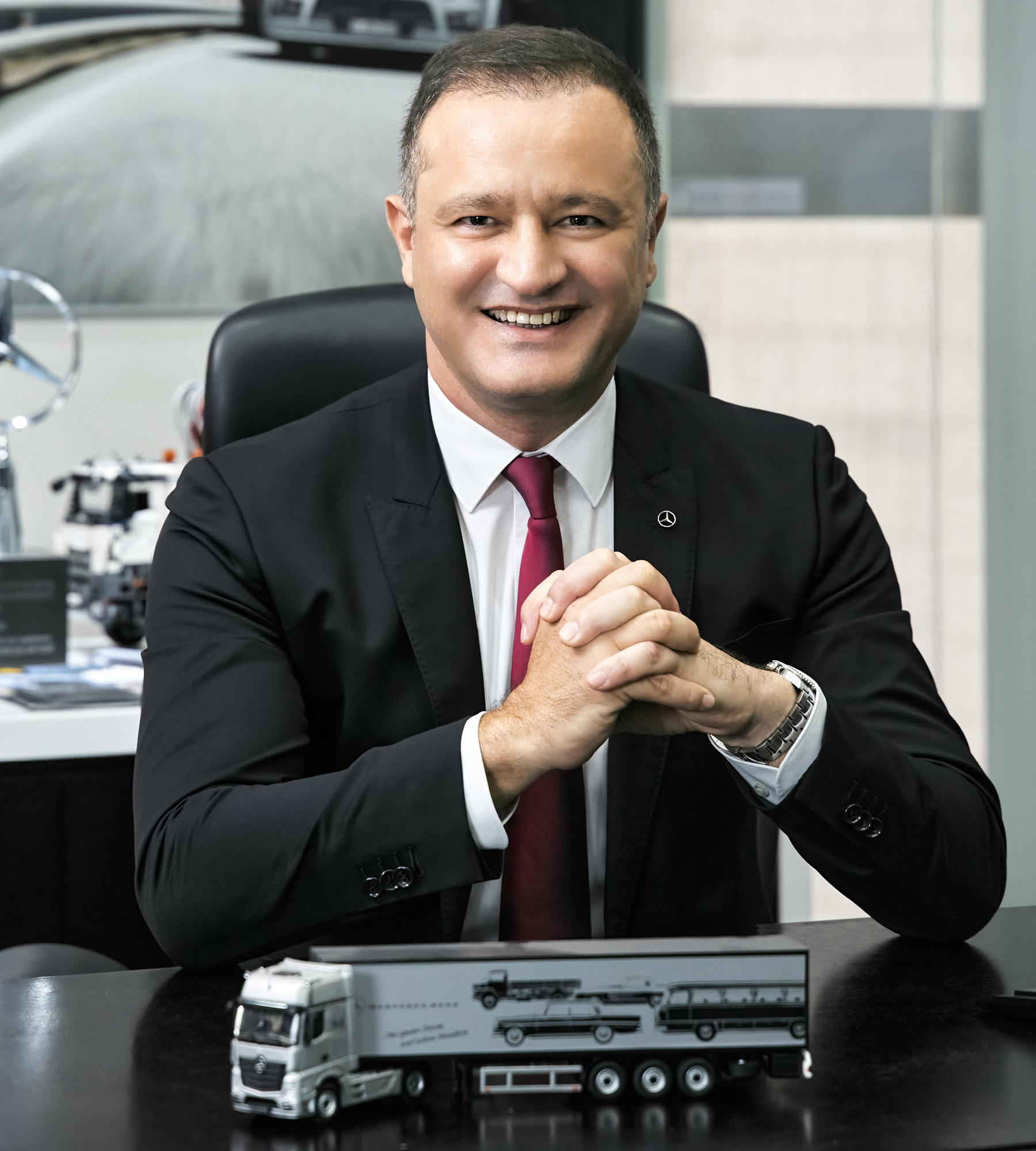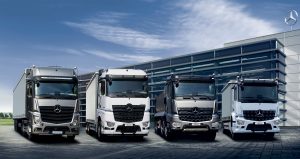Language
You can read the magazine in one of the following languages
Over a year has passed since executives at Mercedes-Benz and Daimler Truck bade each other farewell, climbed into their respective vehicles and headed off in different directions.
Having operated as one entity over many decades, Mercedes-Benz Passenger Cars separated from the trucks operation in late 2021 to create “entrepreneurial freedom and to unlock the potential of both companies”.
The agreement was complete in December 2021 when Daimler Truck listed on the Frankfurt Stock Exchange. According to Antonio Randazzo, President and CEO of Daimler Trucks Korea, it is a realignment that, over time, will achieve both objectives outlined by executives.
“We are our own listed independent company and this gives us huge opportunity because we no longer have to align with Mercedes-Benz Passenger Cars,” he tells The CEO Magazine. “It gives us the opportunity to focus on truck-specific developments and trends without always having to harmonize first.”

“We have been extremely efficient here in Korea and that’s been with a limited product portfolio and limited resources. So the potential is tremendous.”
It was approximately six months after the separation that Randazzo became the first CEO of the Korean business, and he immediately liked what he saw. Perhaps more pertinently, he was also excited at what the future might hold.
Not least among the positives is Daimler’s relationship with partners. “There is a saying in the truck industry: ‘The first truck is sold by the salesman, but the second truck is sold by the service center’,” he reveals.
“So you can imagine how important the partnerships with service centers are for us. If they cannot make our end customers and our drivers happy, those customers won’t come to us to buy the next truck.”
“This cycle has been working for the last 20 years really well. And this is something we are proud of. We take care of our service centers, our customers and our partners.”
It is a business model Randazzo believes will underpin Daimler Truck’s growth in Korea over the next few years while simultaneously mastering the transition from combustion to zero emission vehicles.
With 2023 marking the 20th anniversary of Daimler’s presence in Korea, it seems timely that Randazzo has set his sights on growth. The foundations are in place – Korea is already one of the most important overseas markets of Mercedes-Benz Trucks – and the ambition to make further progress has been clear since Daimler Truck went public and furrowed its own path.
“We have been extremely efficient here in Korea and that’s been with a limited product portfolio and limited resources. So the potential is tremendous,” he declares. “I see huge growth coming from the market itself and from the addition of new products and more brands from the Daimler Truck family. This will all help grow the footprint of Daimler in Korea.”
Yet growth is rarely achieved without bumps along the way, and Daimler Trucks Korea is no exception. Randazzo identified two in particular – one internal, the other driven by external forces that will be familiar to many executives.

“In my experience, if an employee is given accountability and responsibility, they will use that entrepreneurial freedom for the good of the company.”
The first concerns the shift to zero emission transportation. Randazzo describes the challenge as ‘huge’ given the company needs to earn money from combustion in order to fund the development of e-vehicles.
“This transformation to zero emission or digitization is a tough challenge to master as an OEM [Original Equipment Manufacturer] and we cannot master it alone,” he says, stressing that customers and the government must come along for the ride to ensure a sustainable future of transport.
The second challenge is attracting talent. “The commercial vehicle industry is regarded as a sundown industry and has difficulty attracting talent,” he explains. “But with the ongoing transition of our industry, especially the transformation to zero emissions solutions, it is an exciting time. With targeted trainee programs, we can attract the right people to serve our purpose.”
While recruitment may be problematic, it’s clear what type of employee Randazzo is drawn to – empowerment is a key component of his leadership style. But only team members who accept accountability are given the potentially career-enhancing responsibility that comes with such an approach.
Empowering staff who are not prepared to face the challenges is an almost futile exercise, he says. “I want to hire people with good character and the right skills,” he explains. “In my experience, if an employee is given accountability and responsibility, they will use that entrepreneurial freedom for the good of the company.”

More broadly, Randazzo believes leadership styles need to be ‘adjustable’ to specific situations and cultures. There is no one-size-fits-all approach for all circumstances, he says.
But he quickly returns to his overarching philosophy. “I see my role as having a vision, offering strategic pointers, and motivating my employees to achieve our goals in creative ways. The activities and where to run and how to do it, this should be done by my team,” he insists.
“Of course, we cannot have endless discussions. At the end of the day, someone needs to make a call. But communicating and having an overall vision is the one thing that I really try to foster, so that we are progressing together as a team.”

